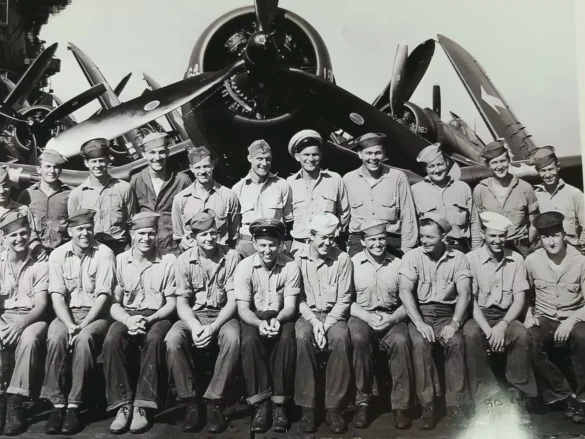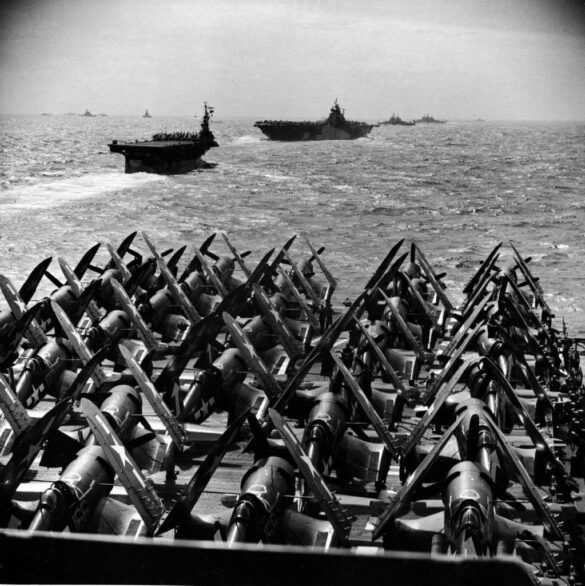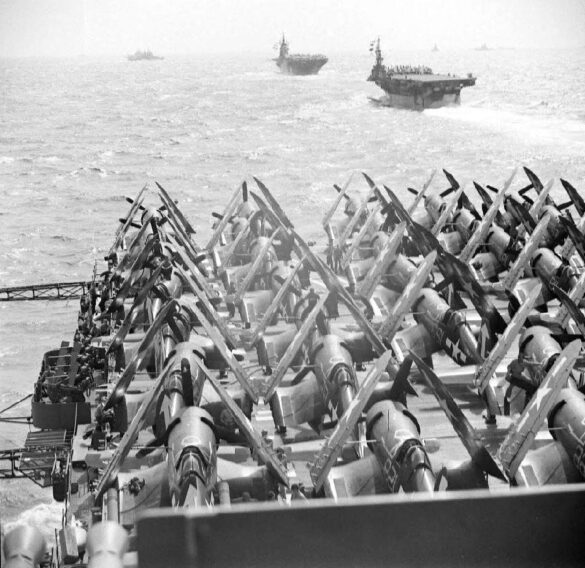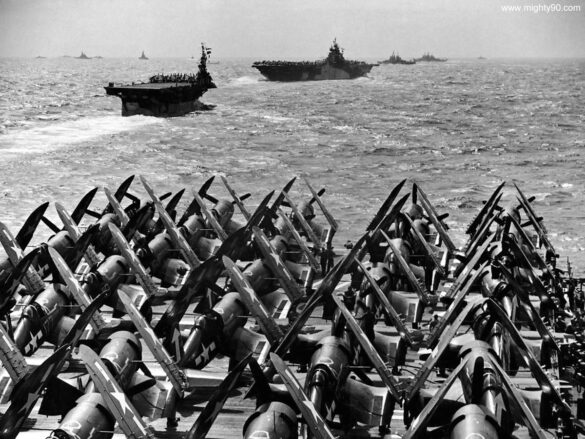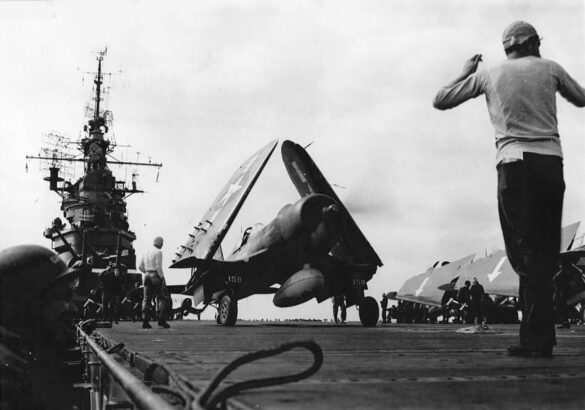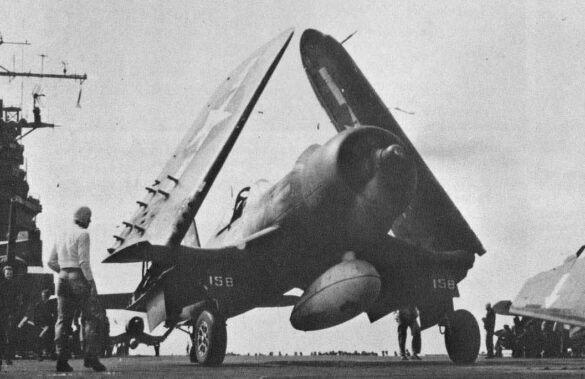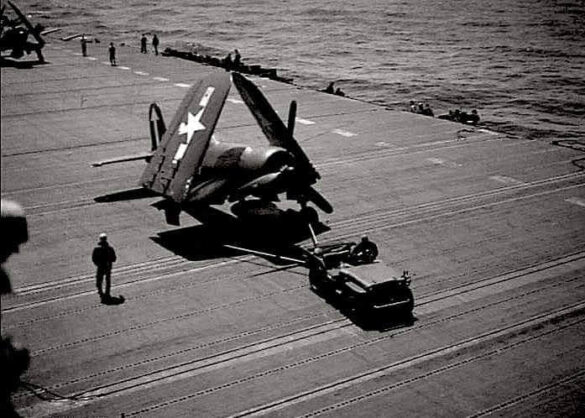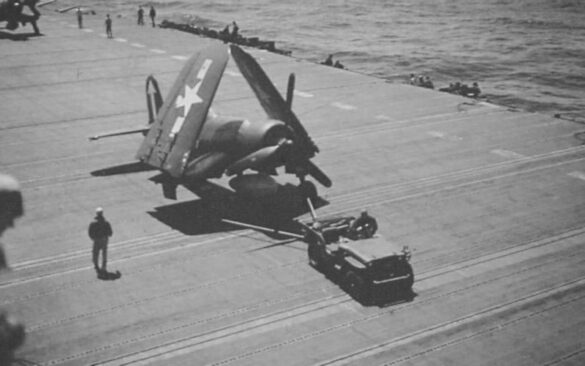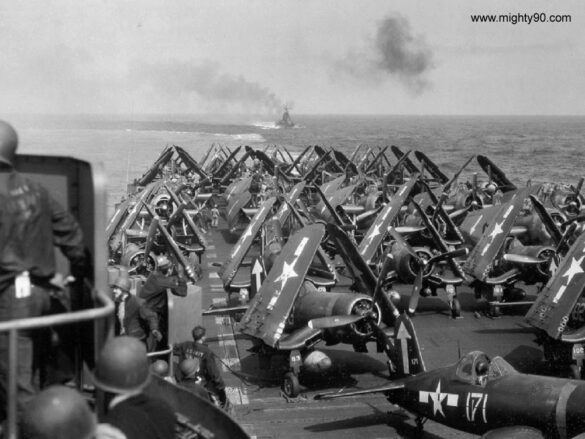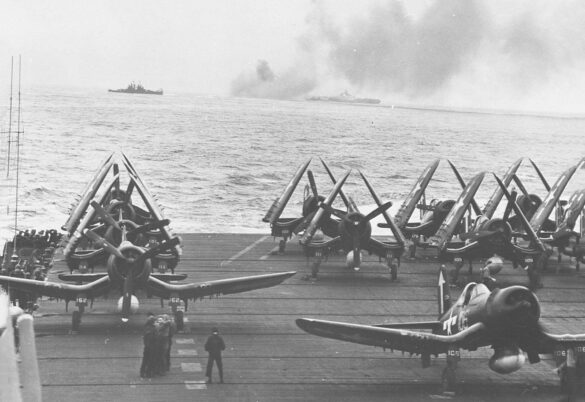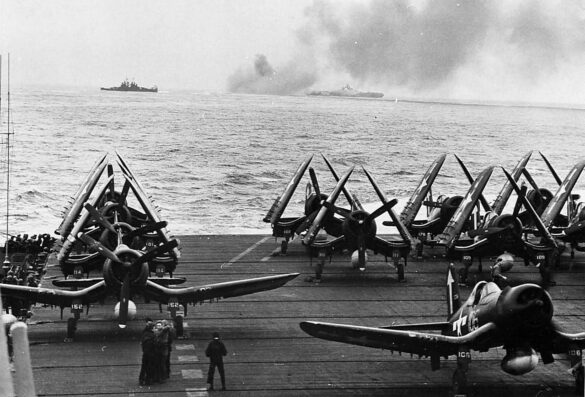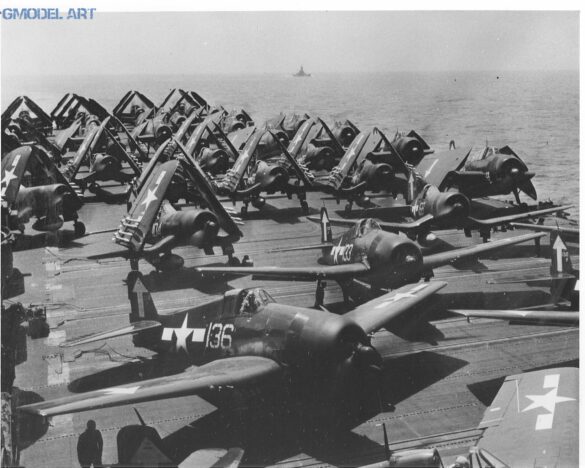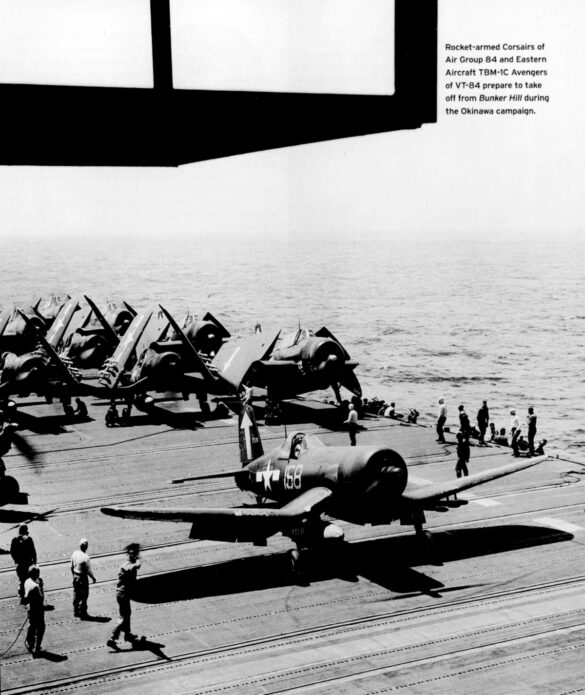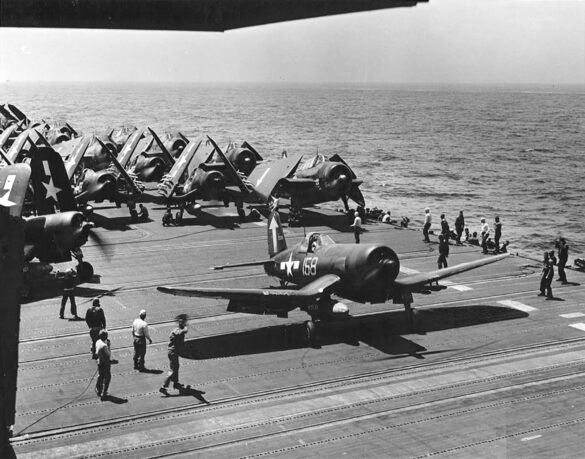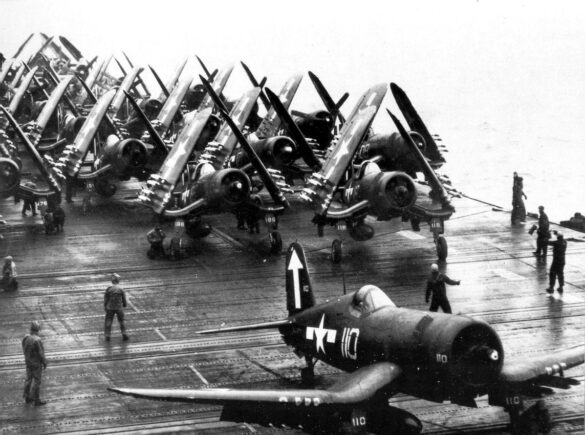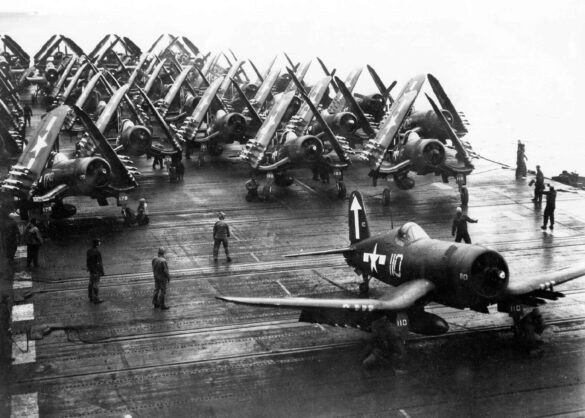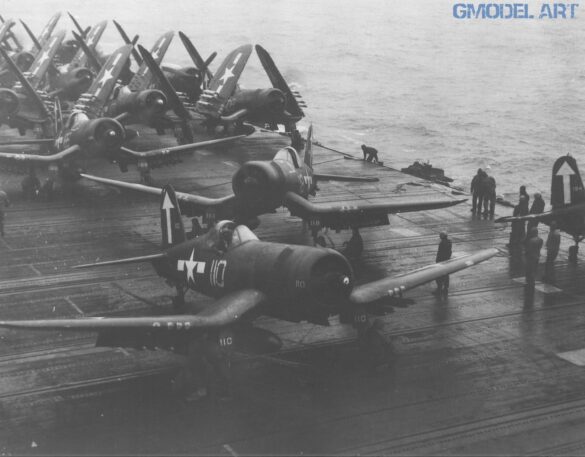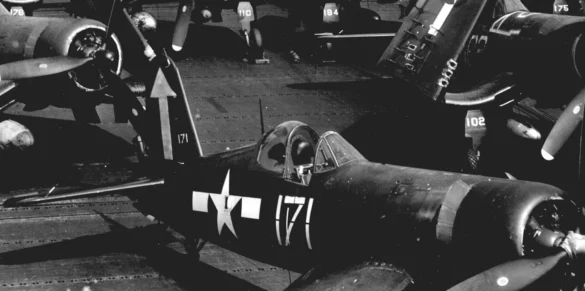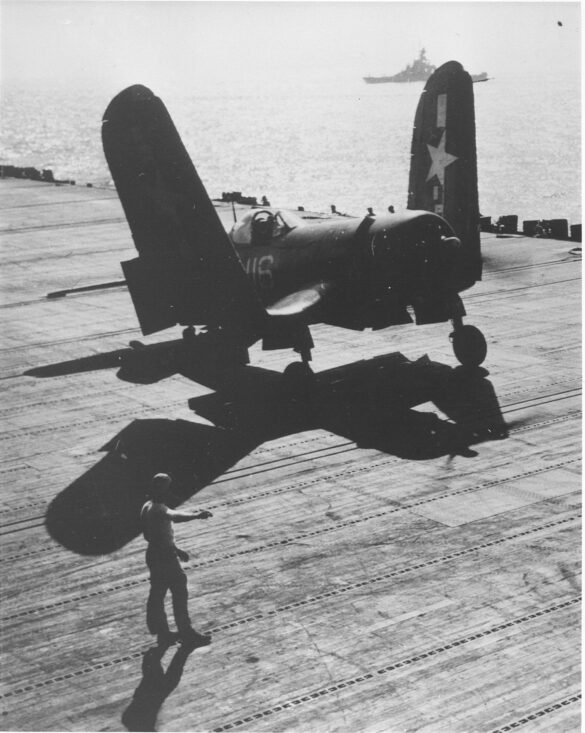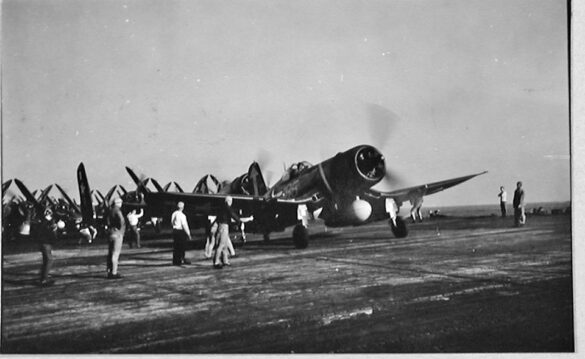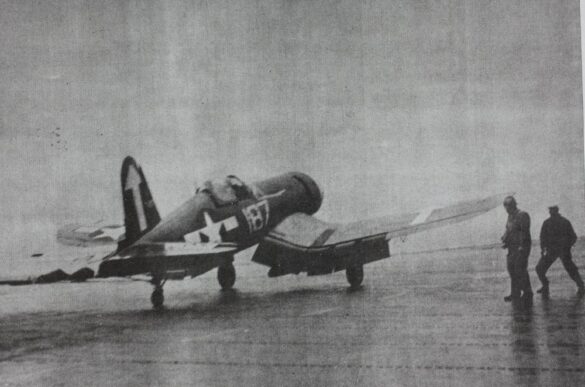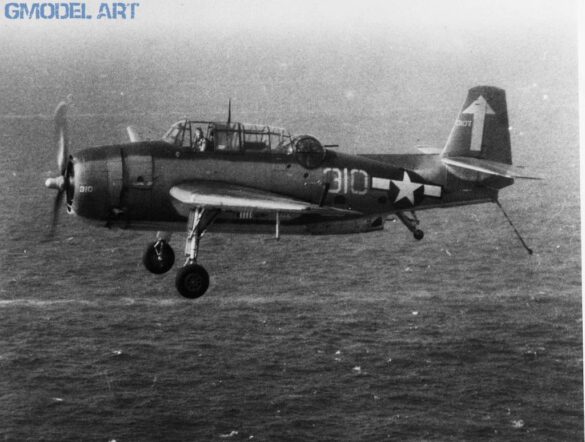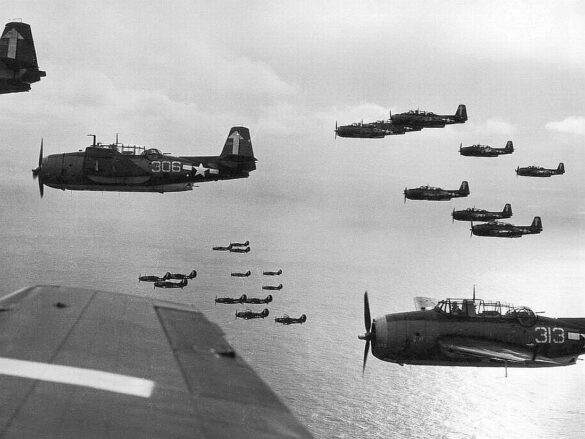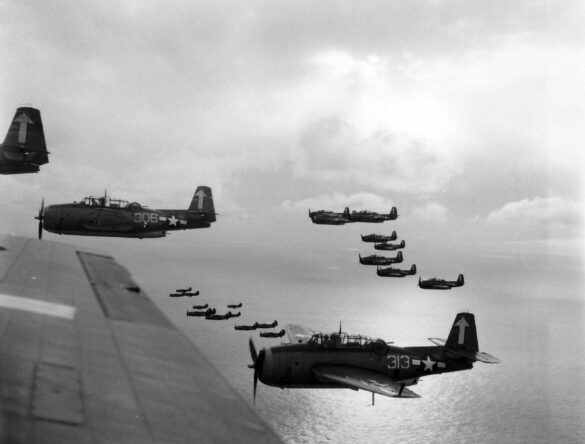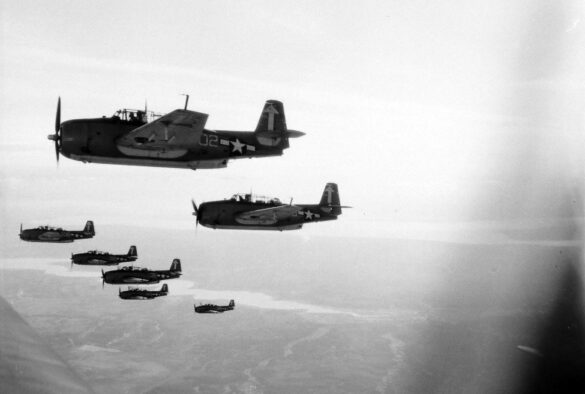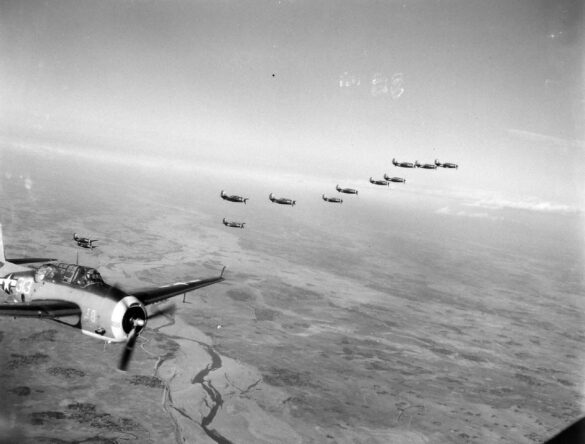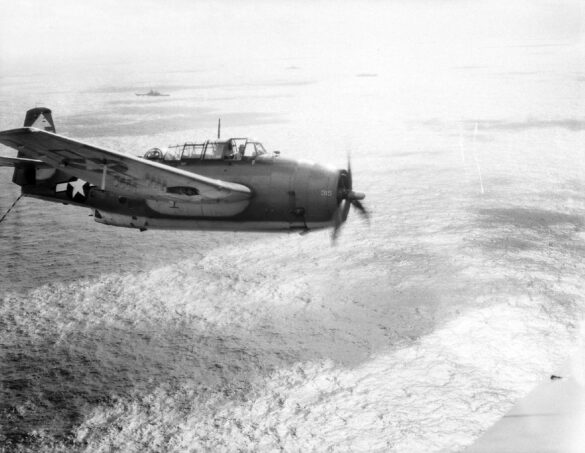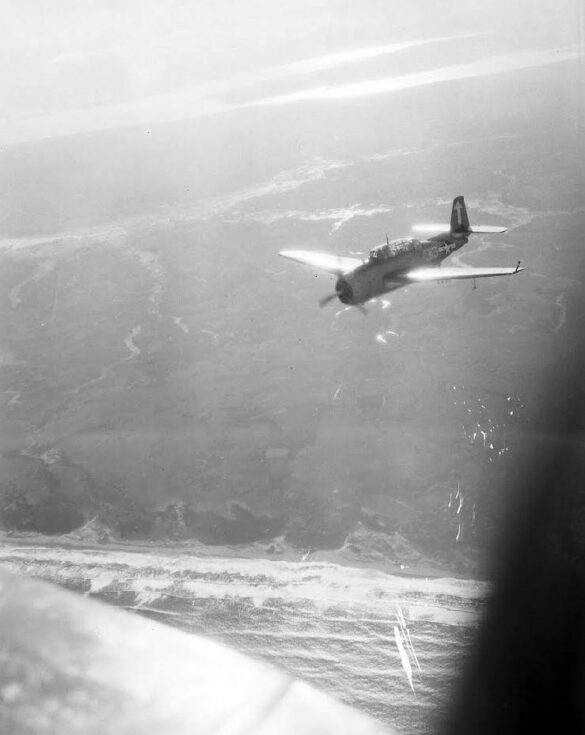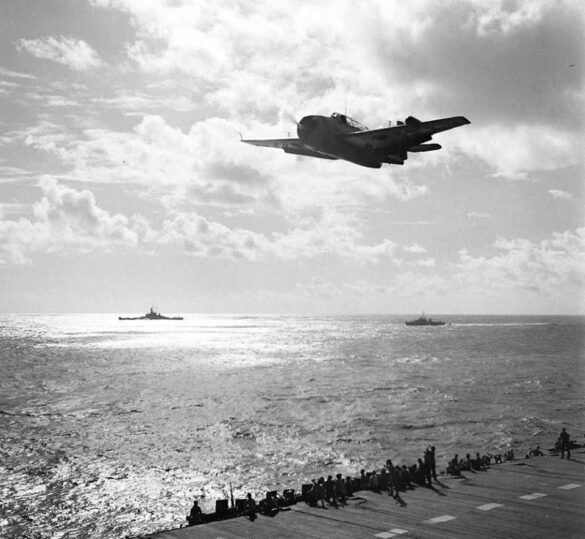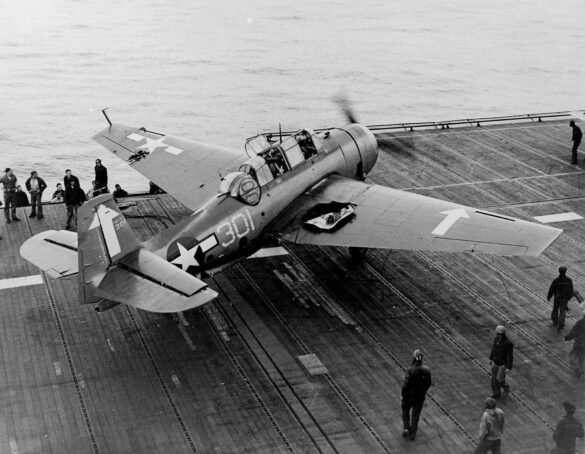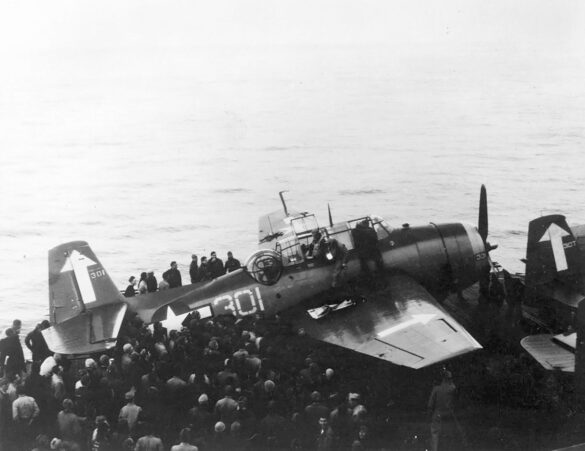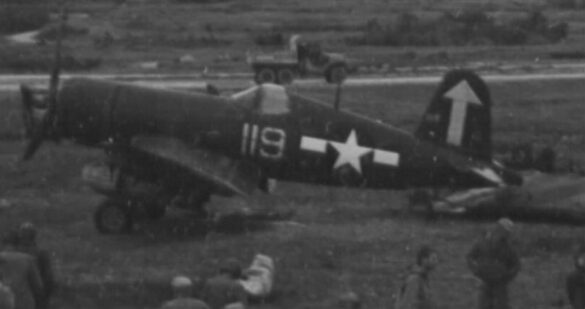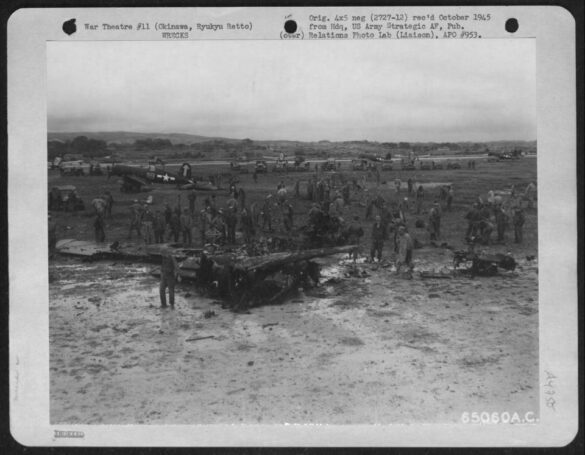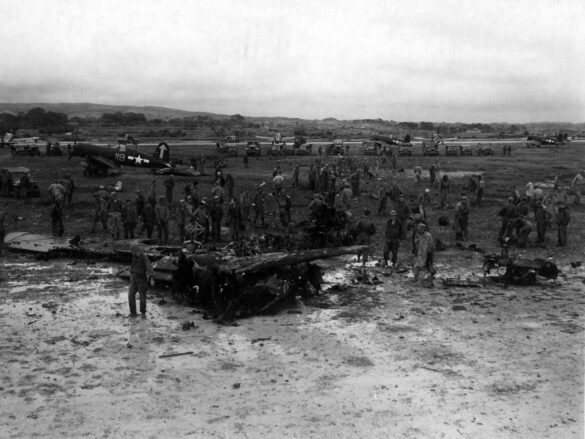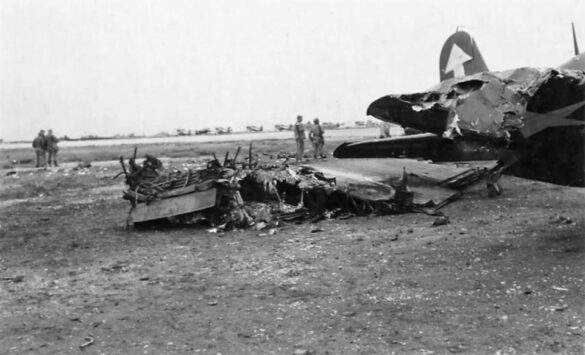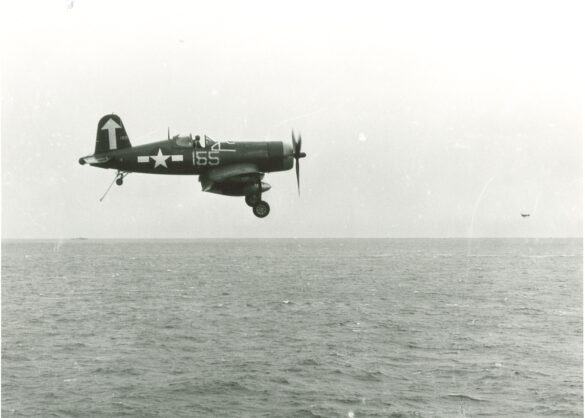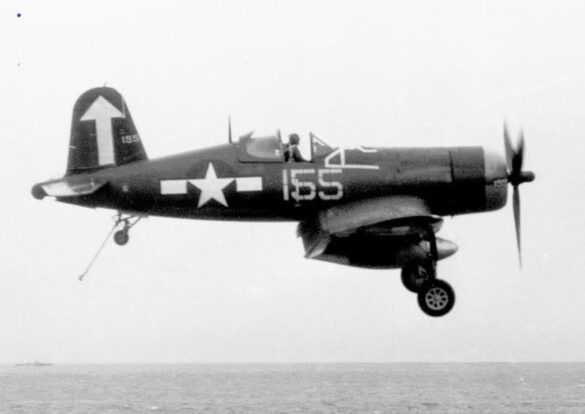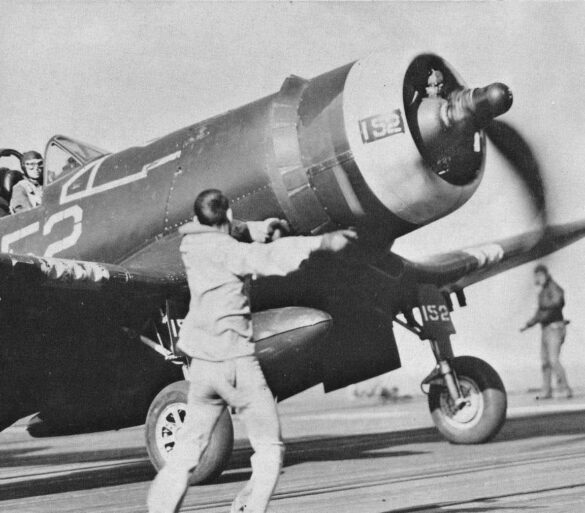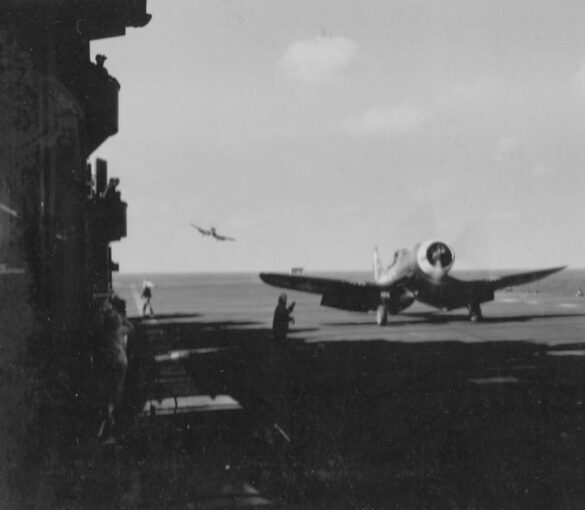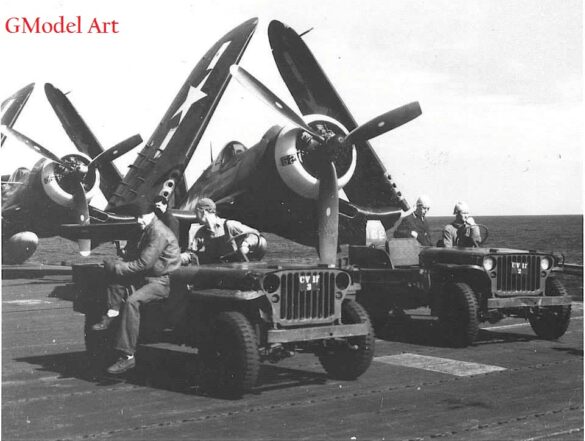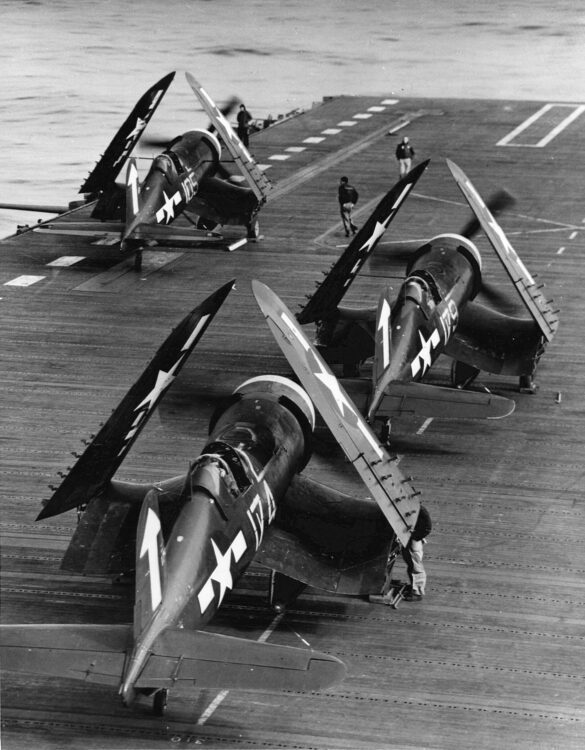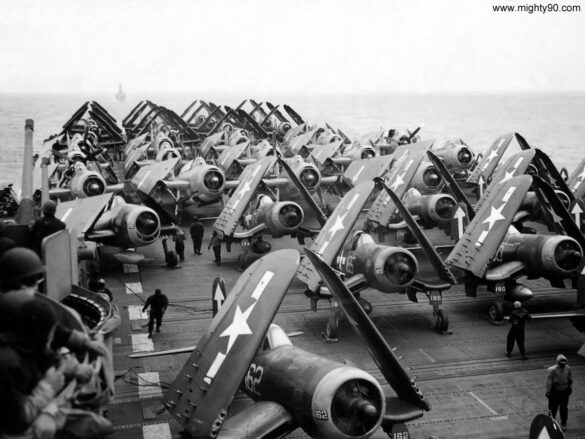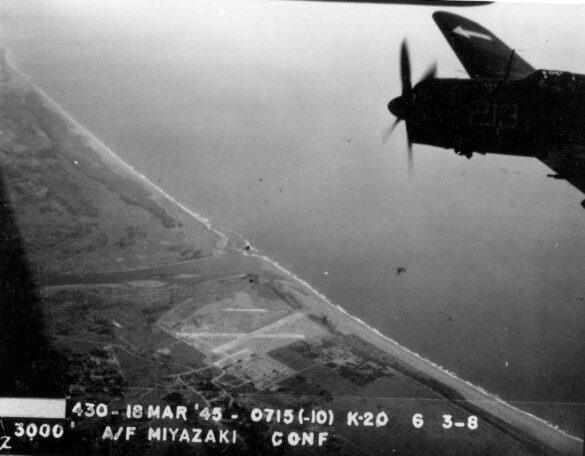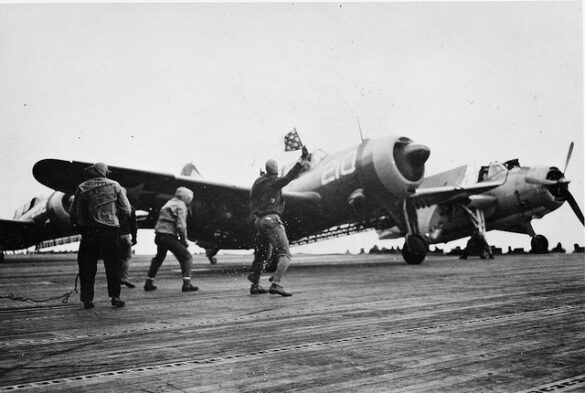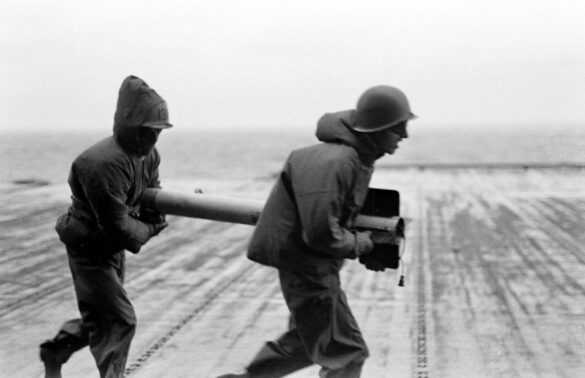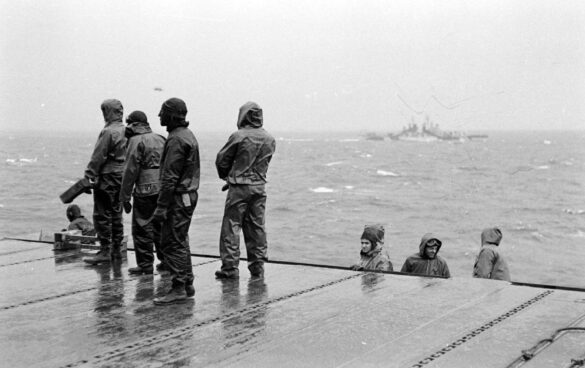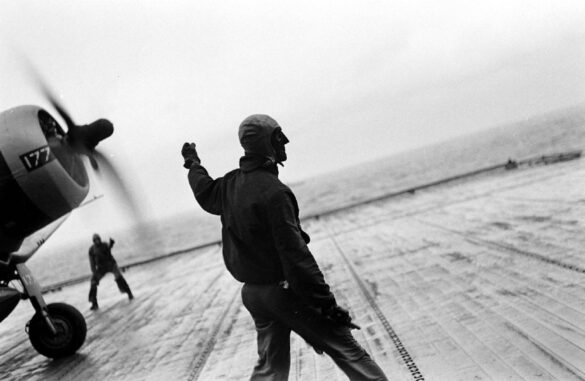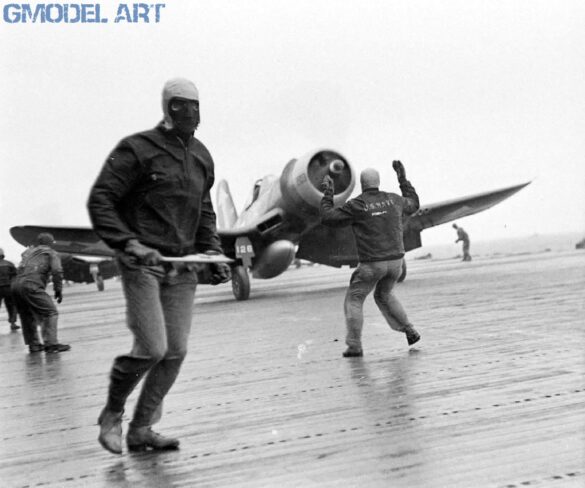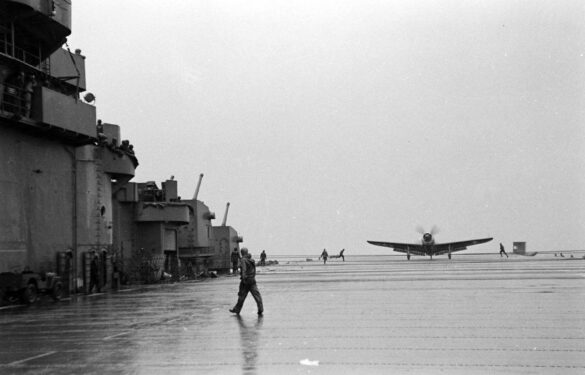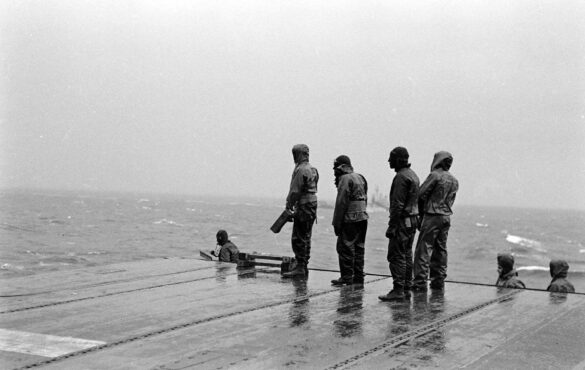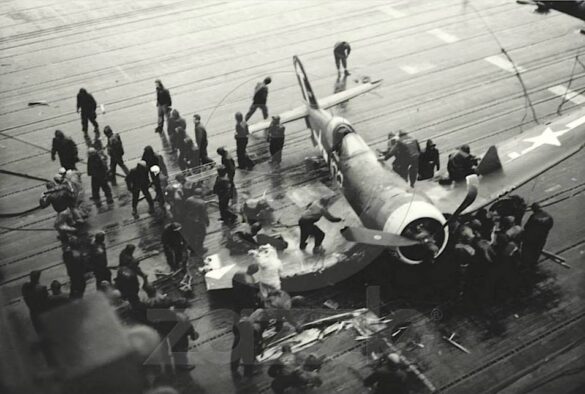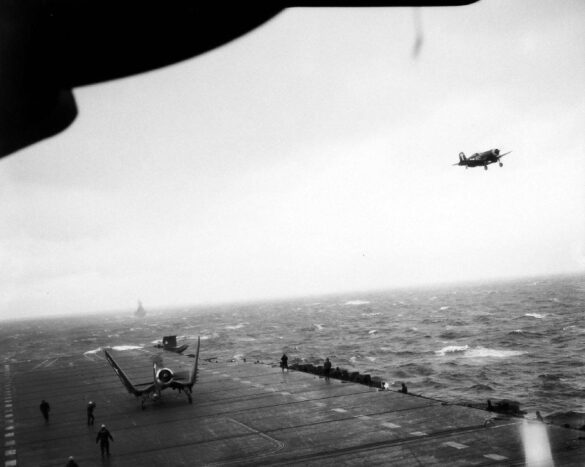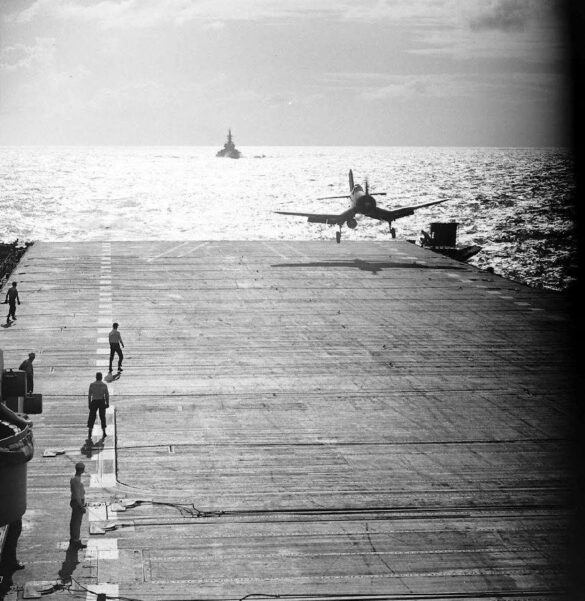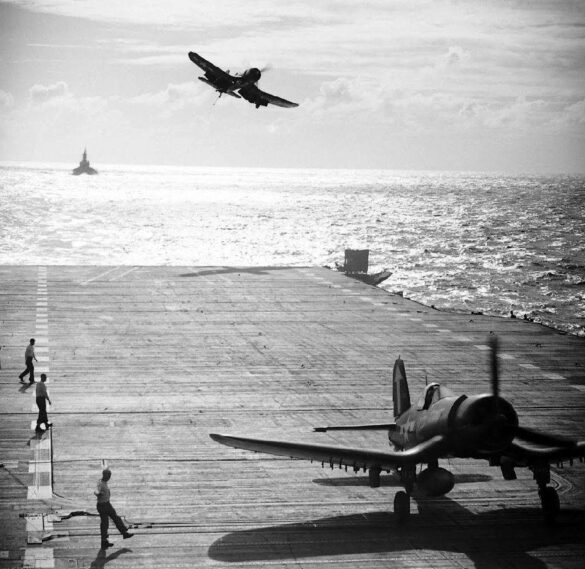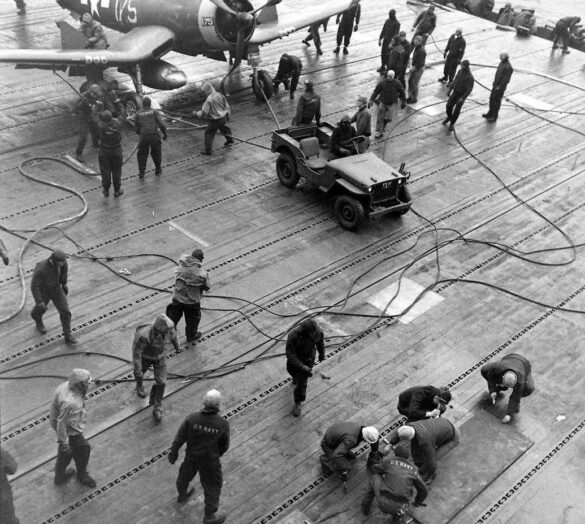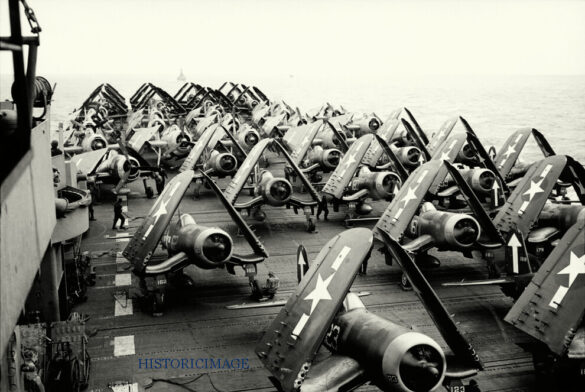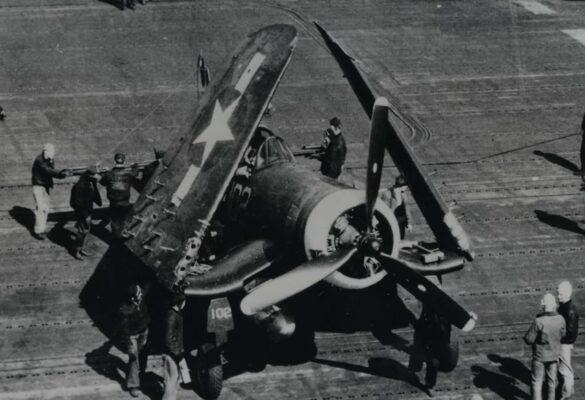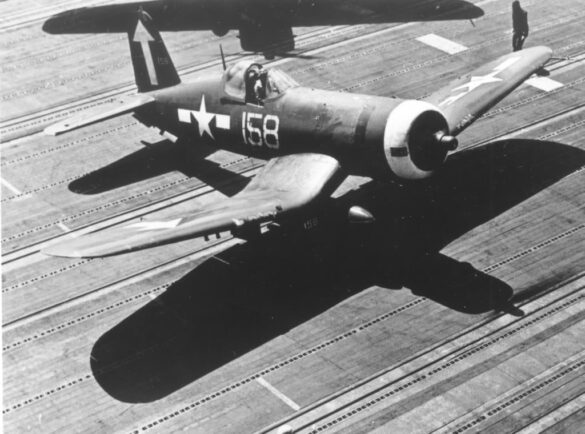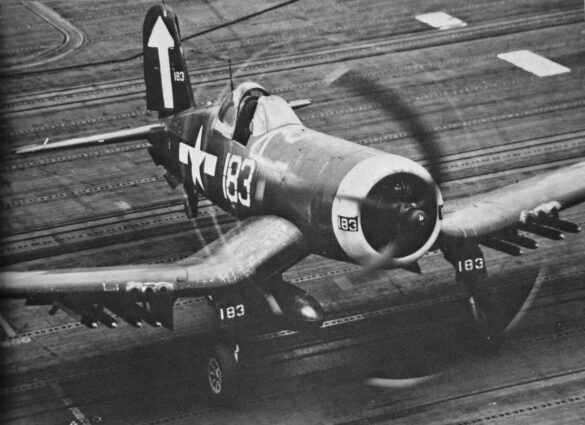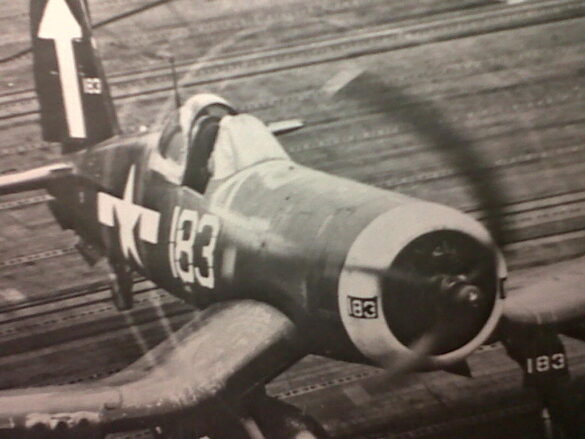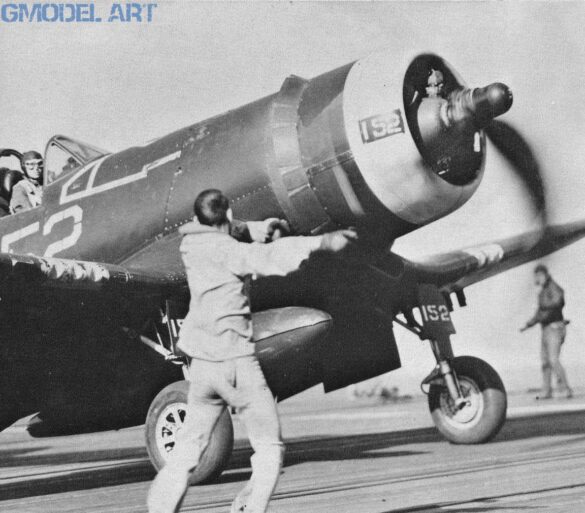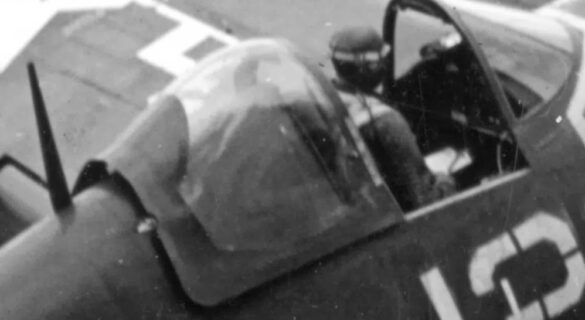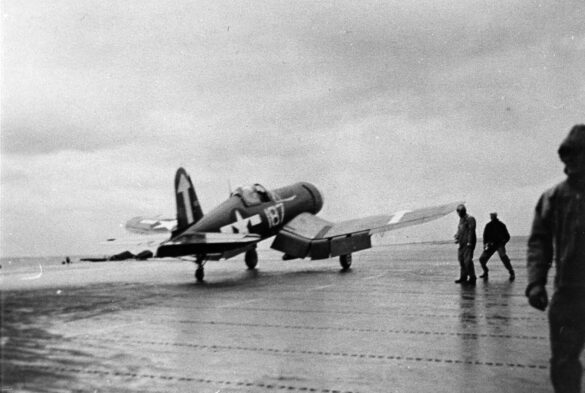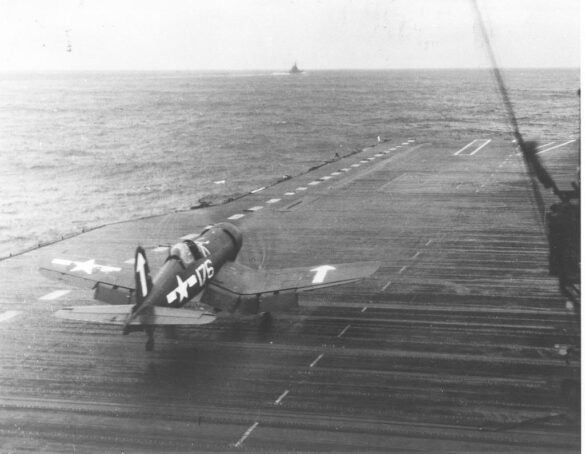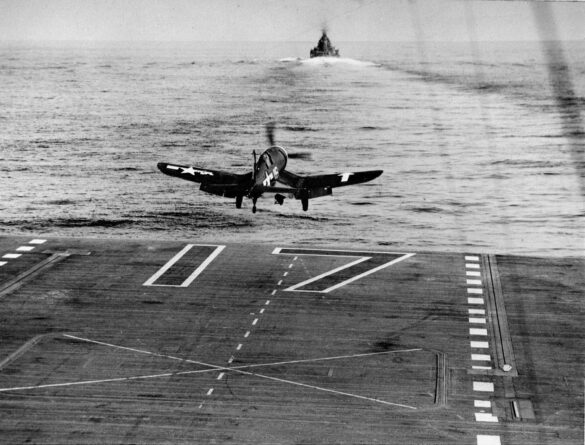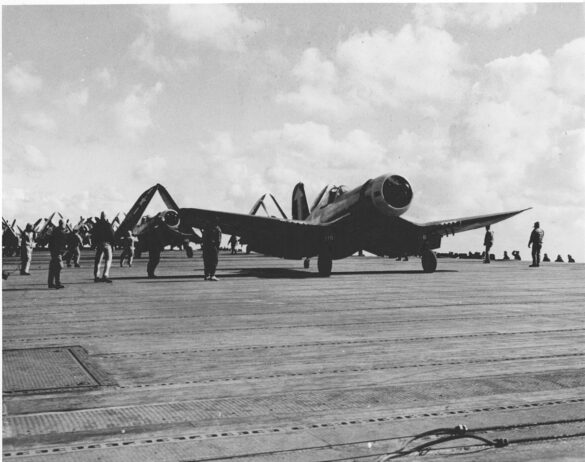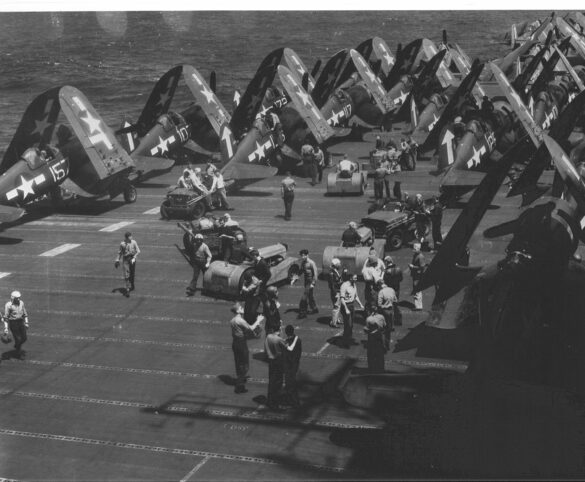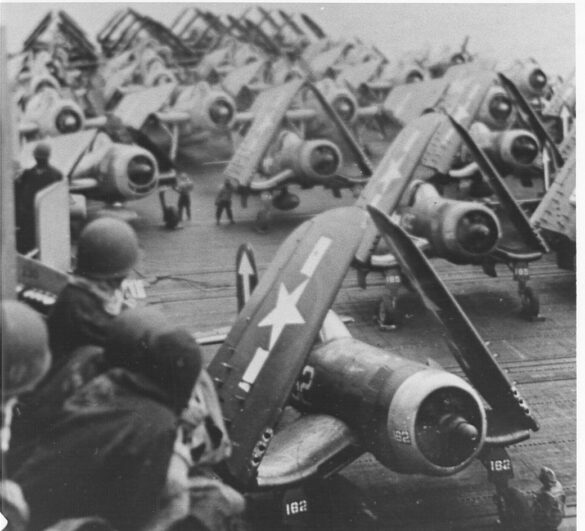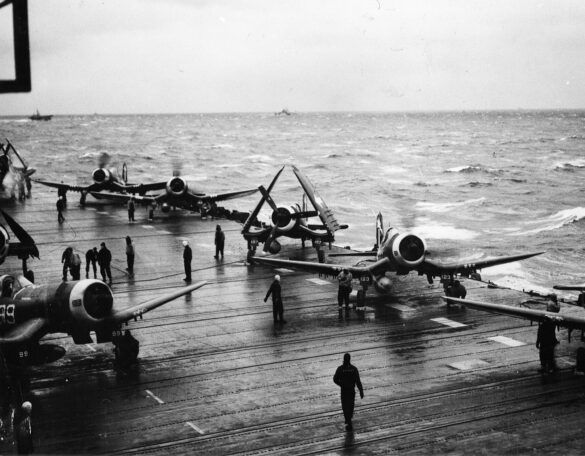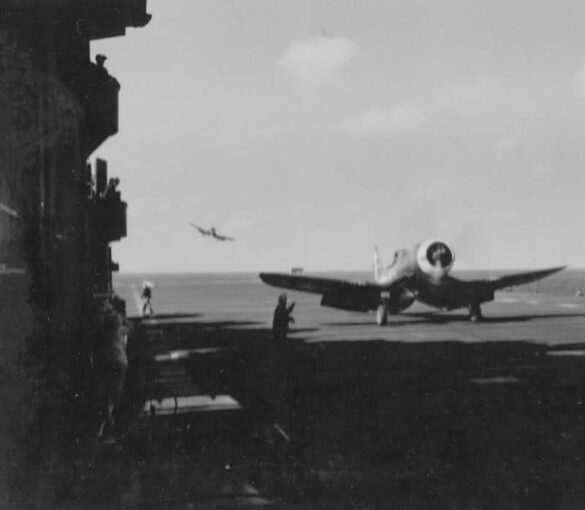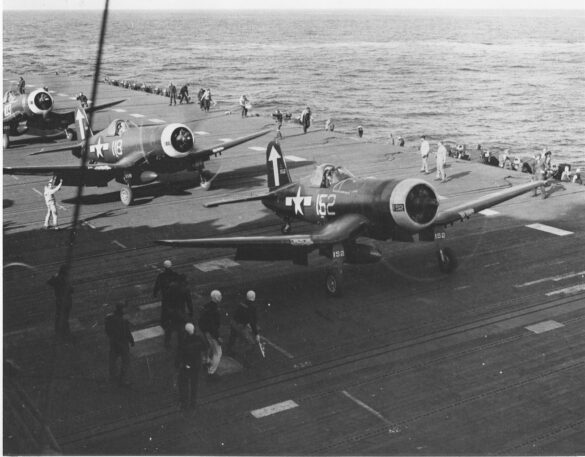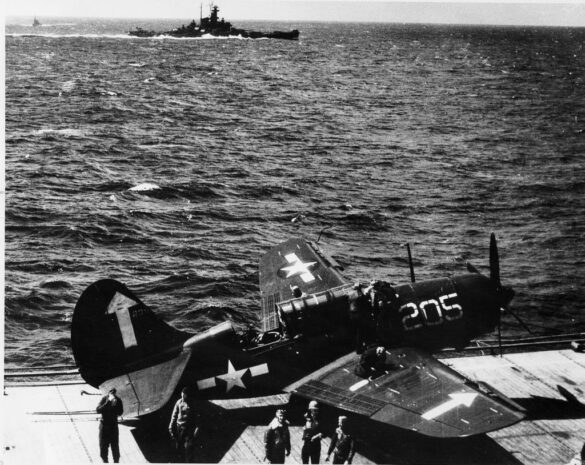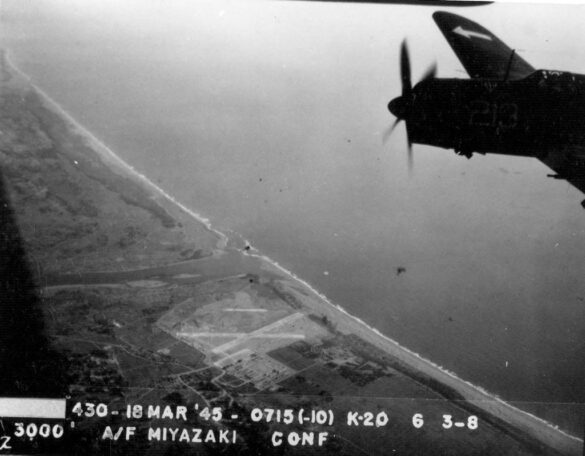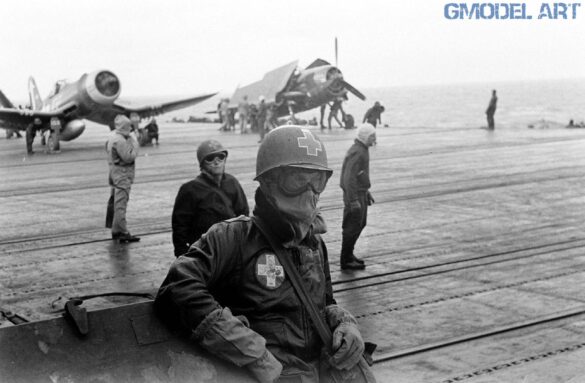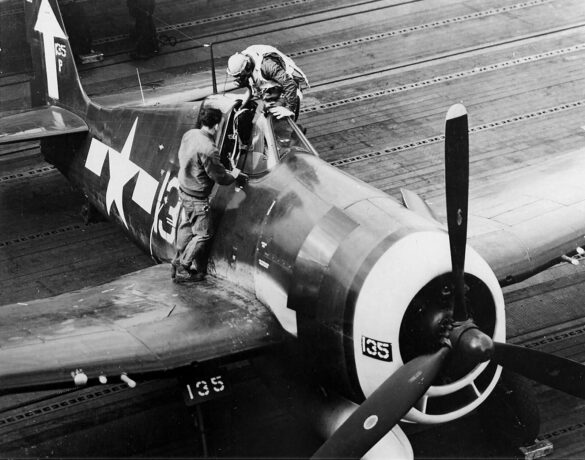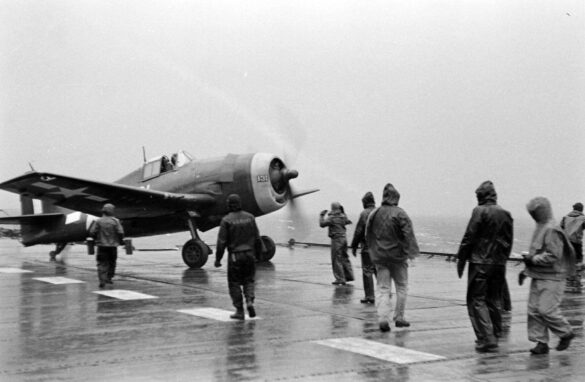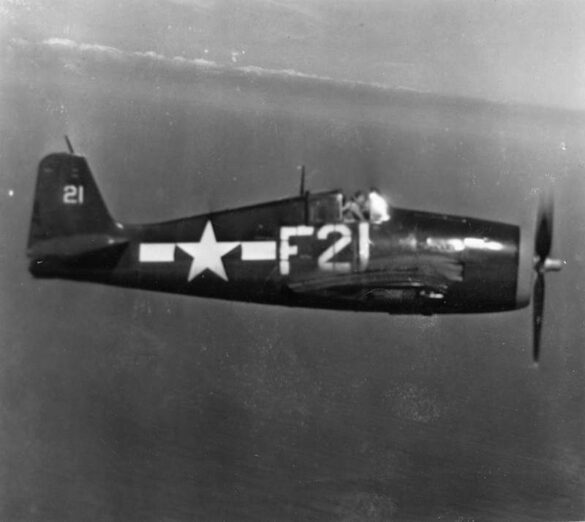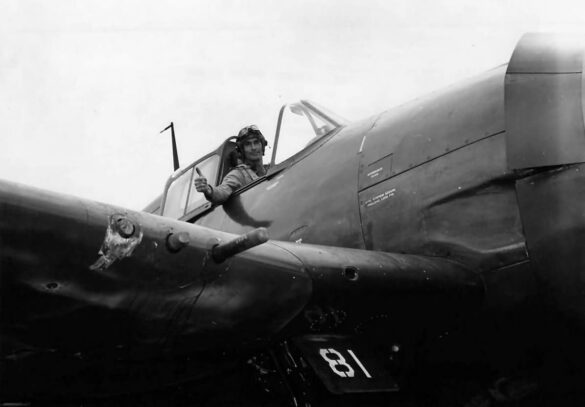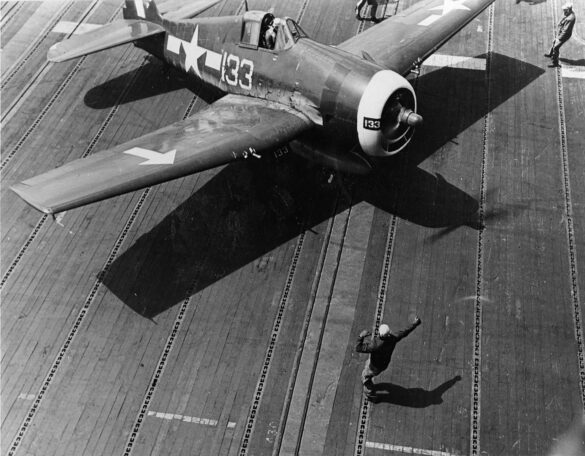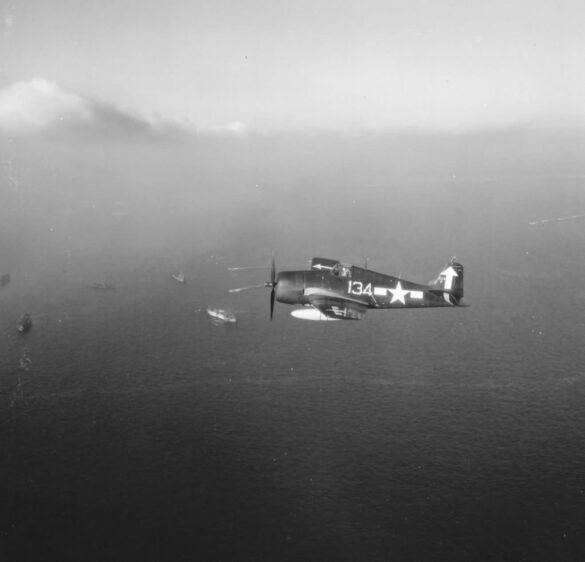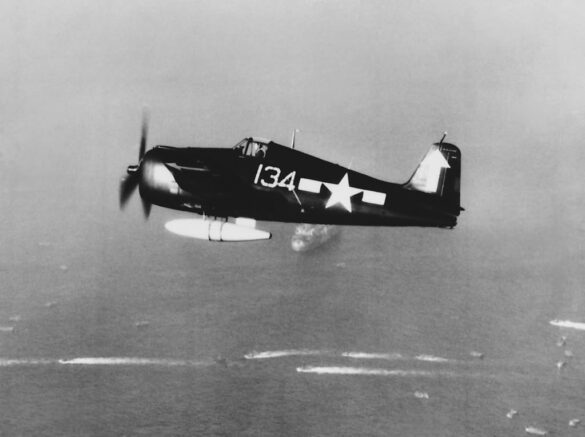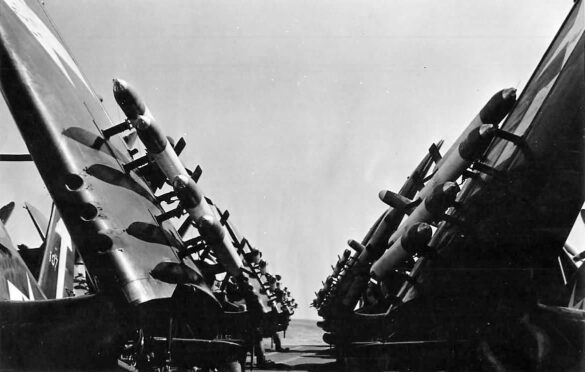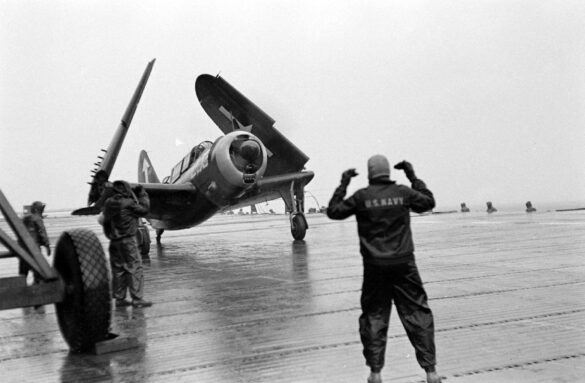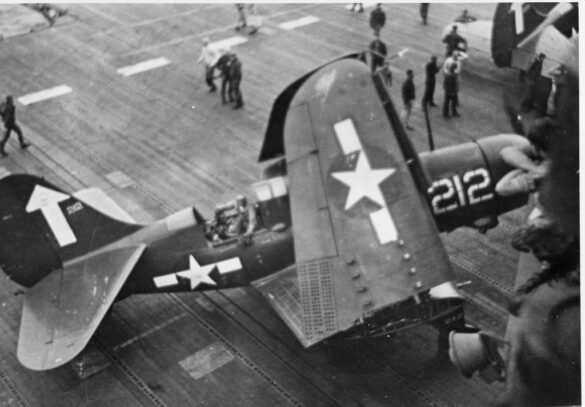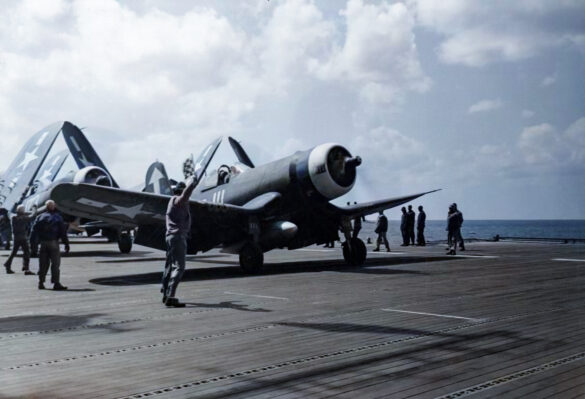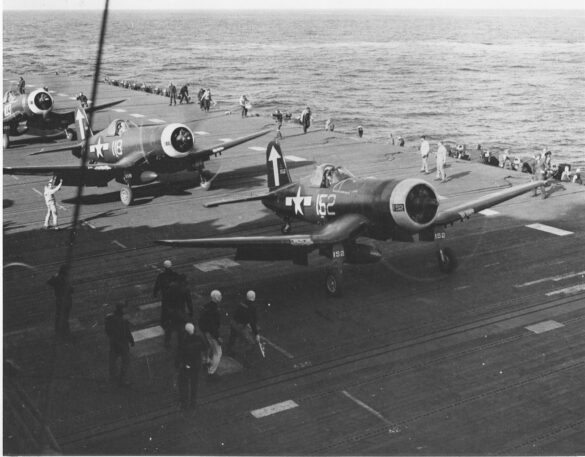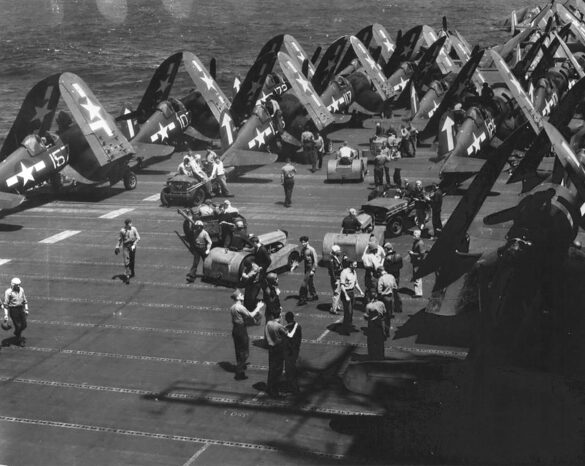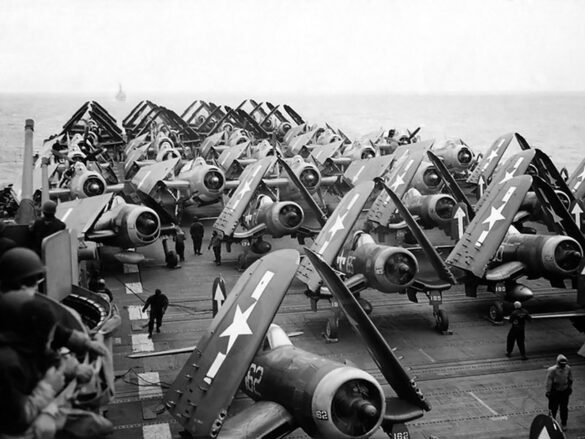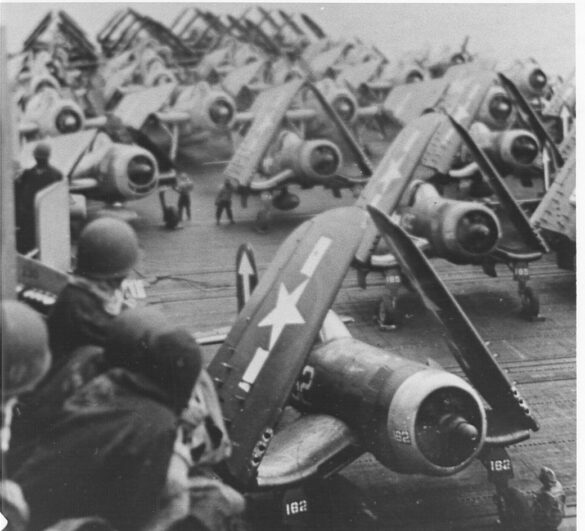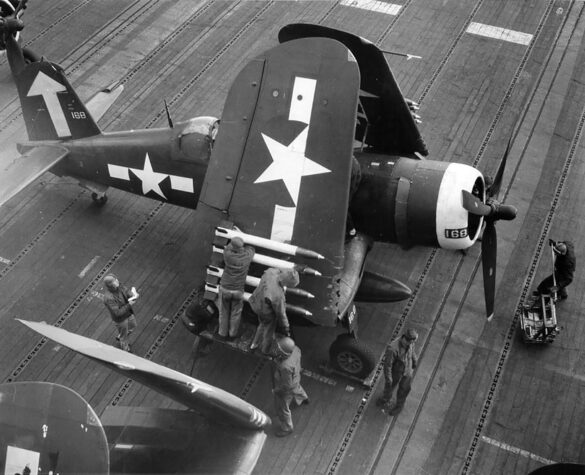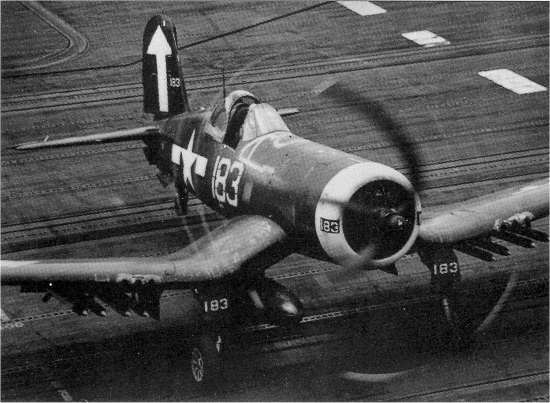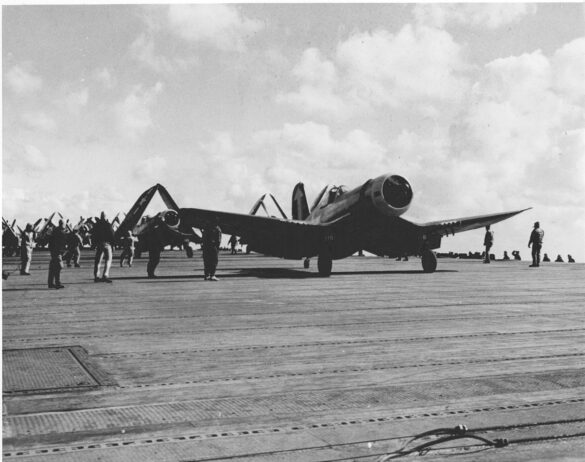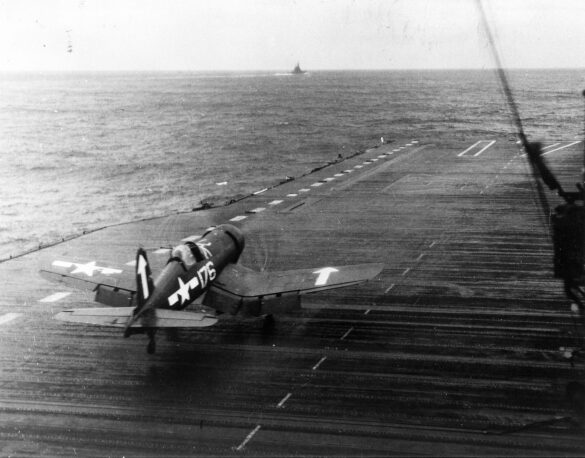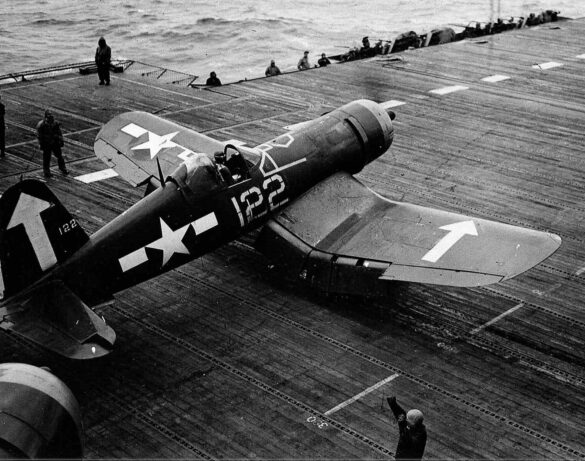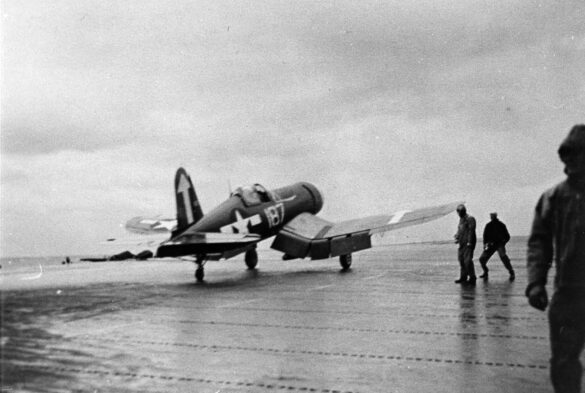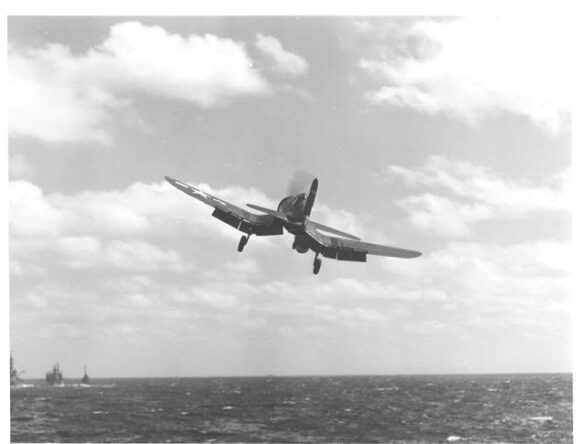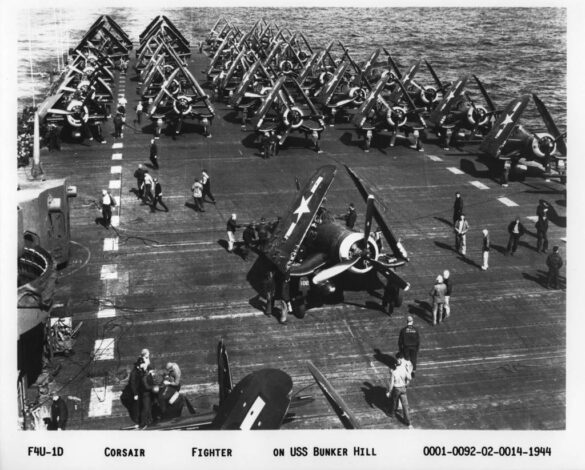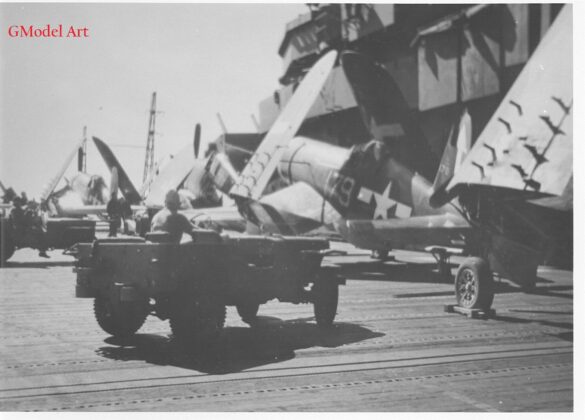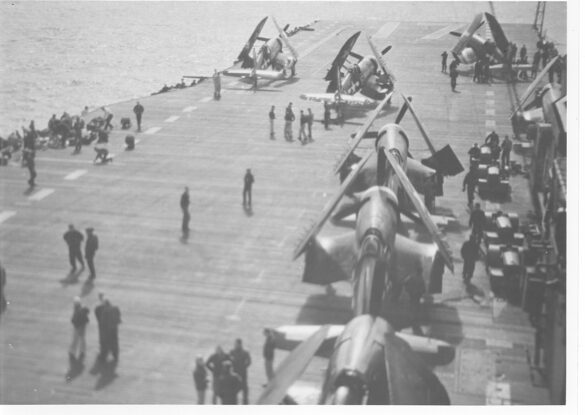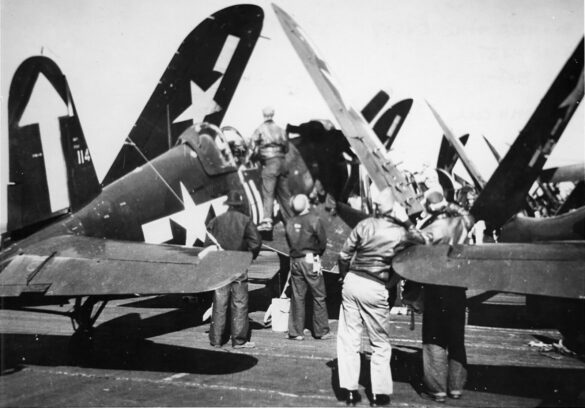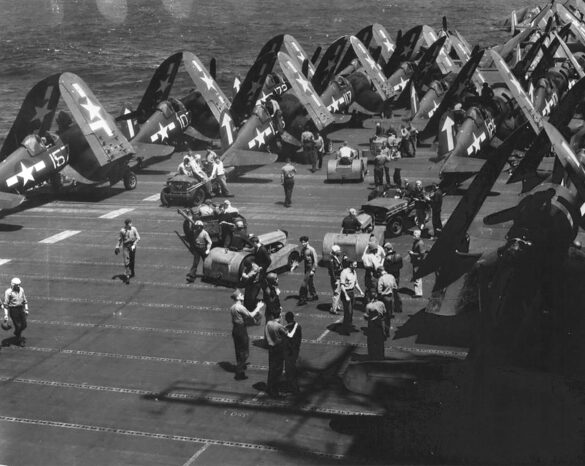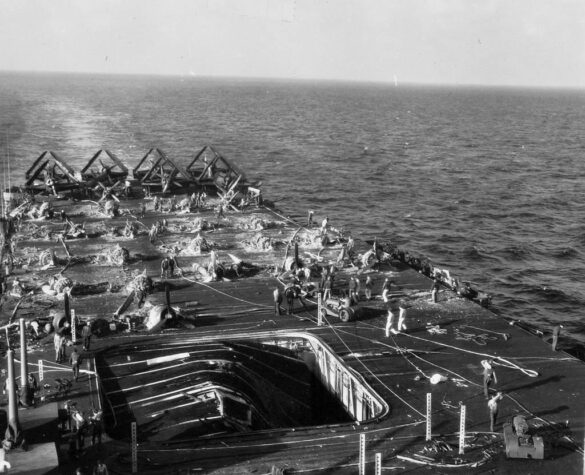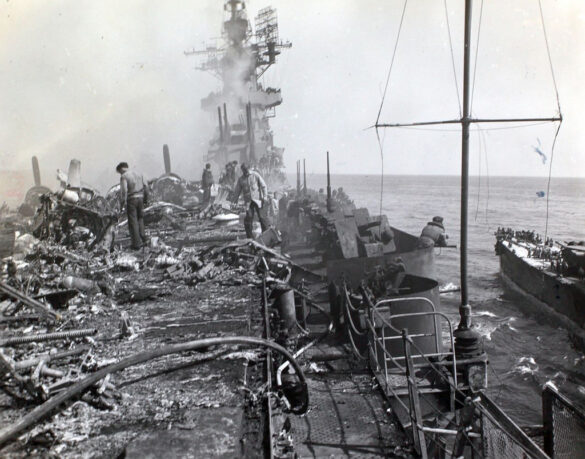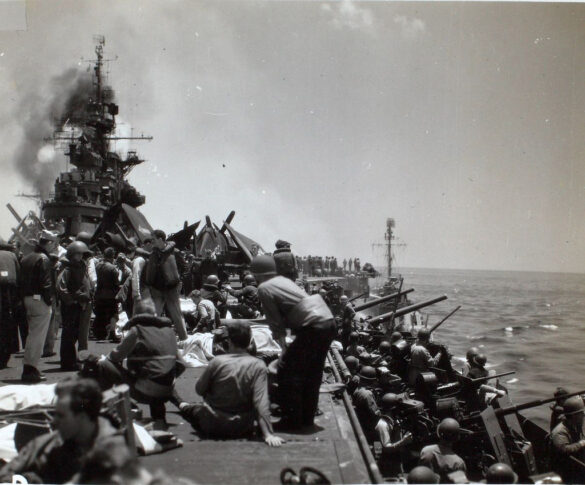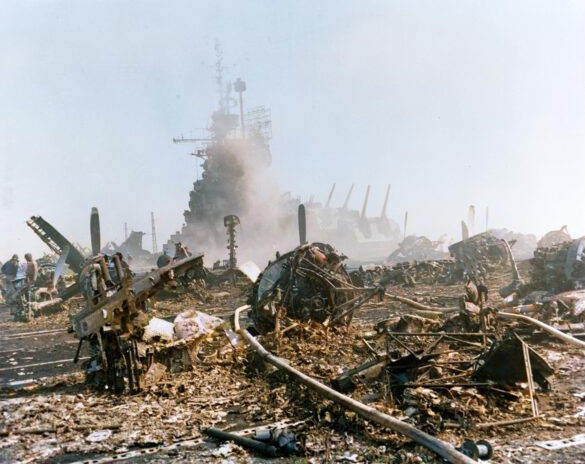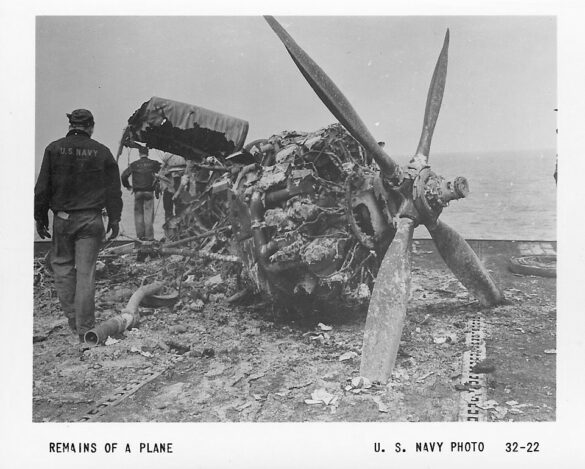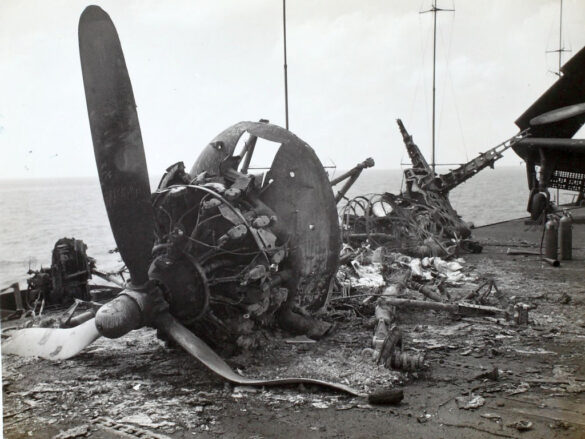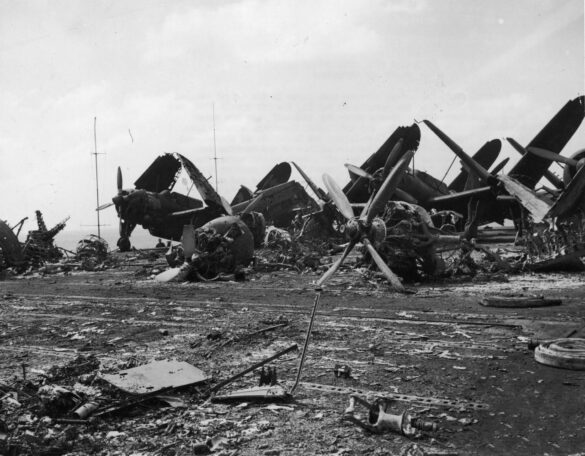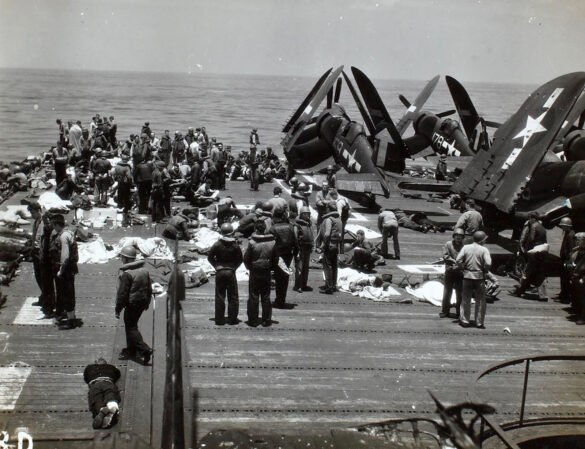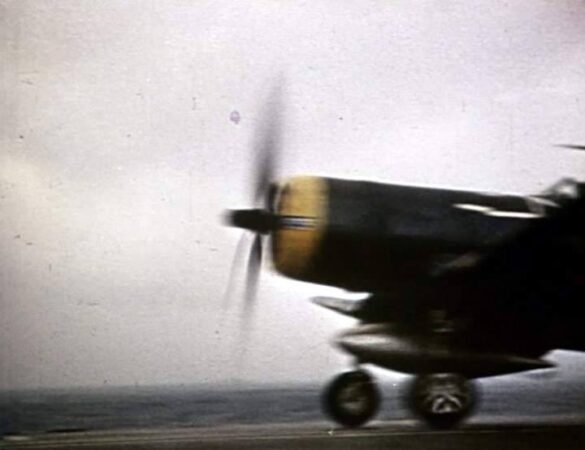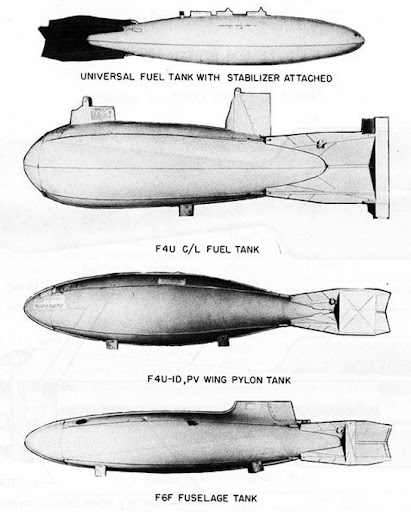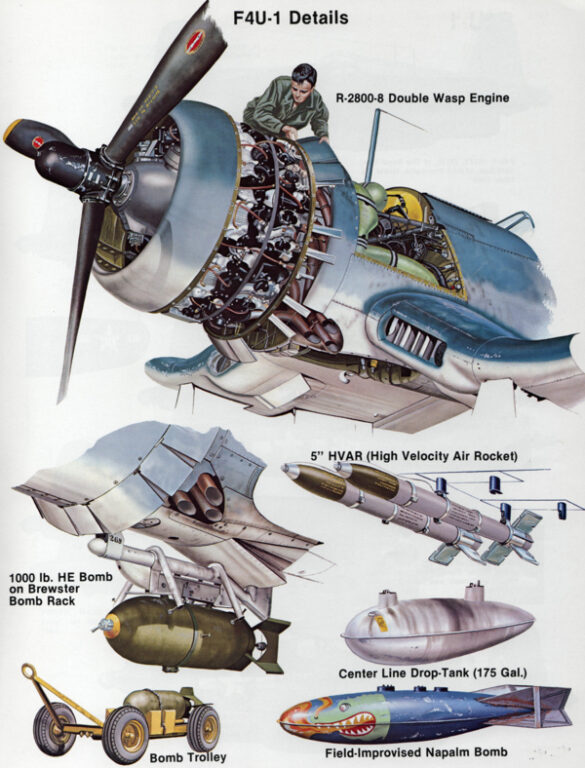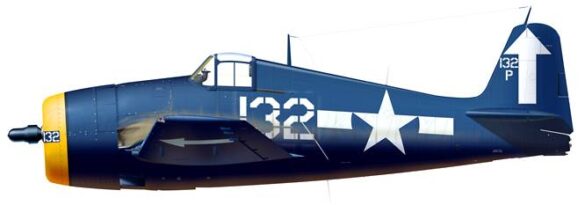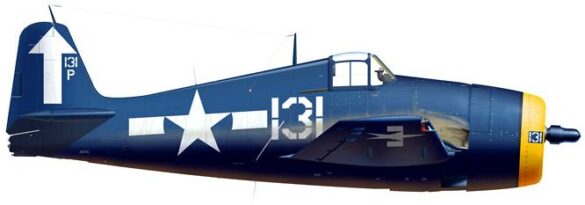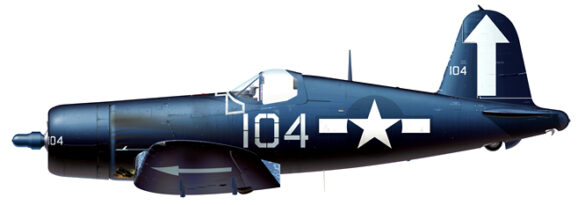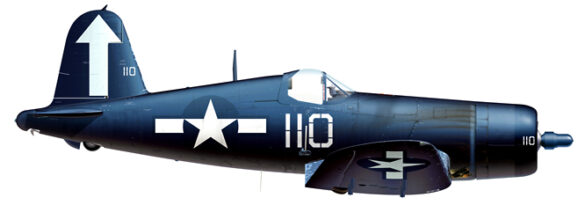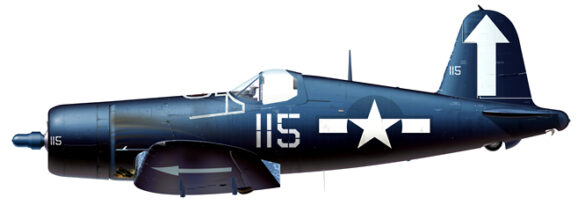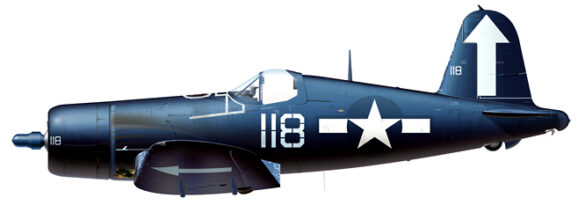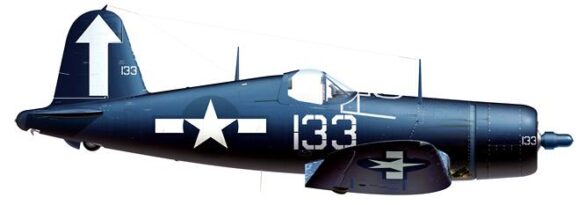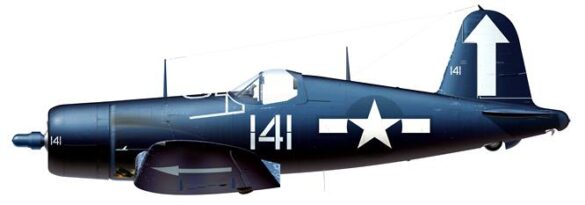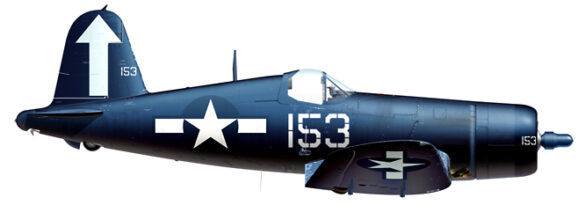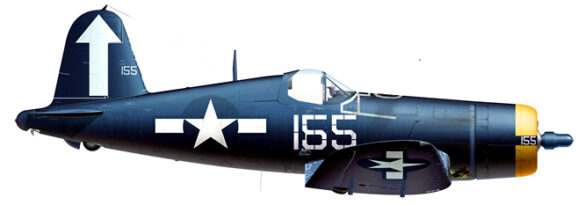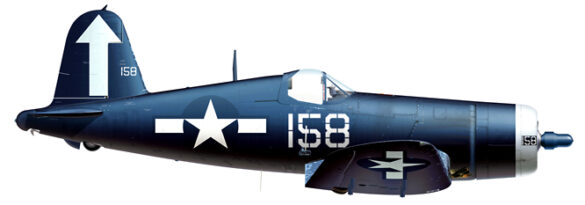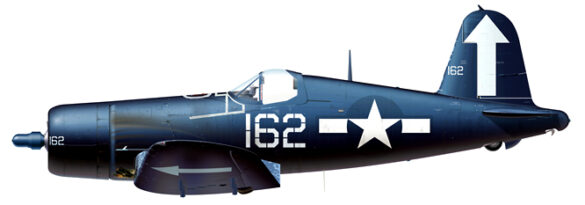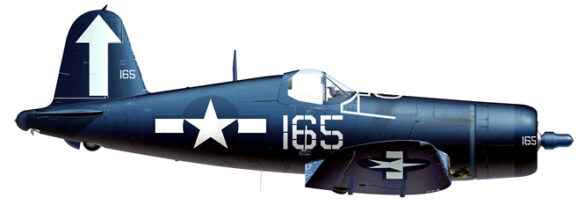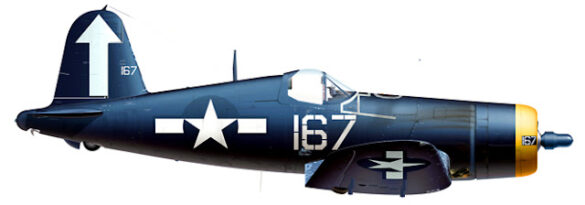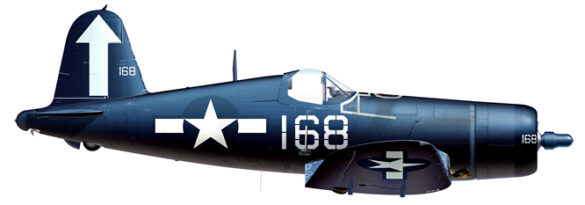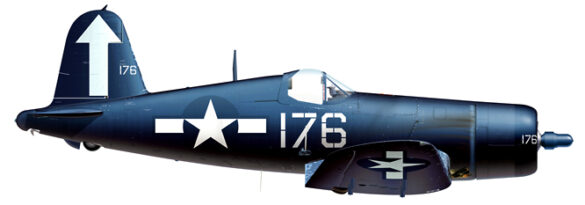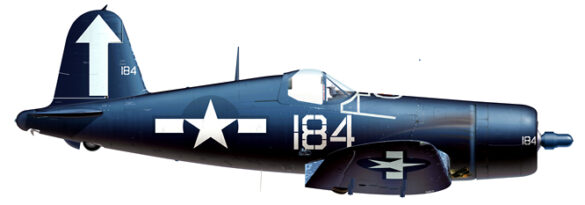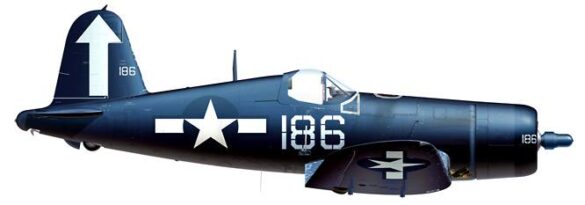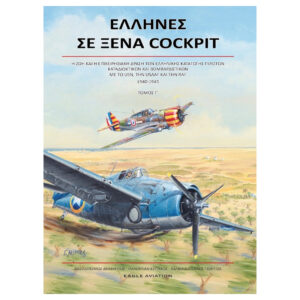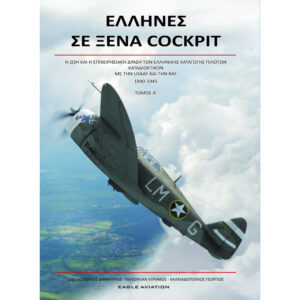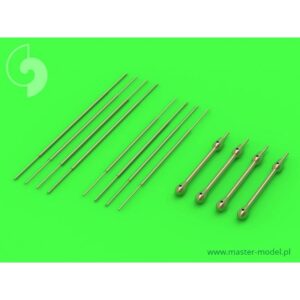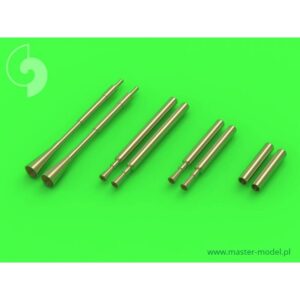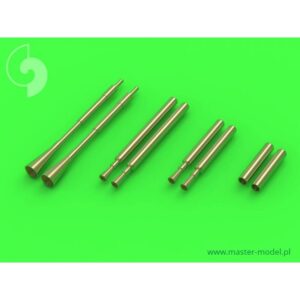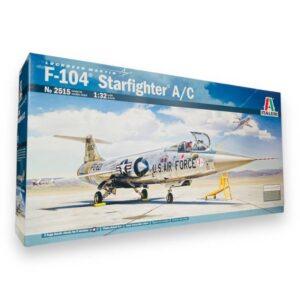article
VF-84 Fighter Squadron 1944-1945
History
Fighter Squadron 84 or VF-84 was a United States Navy aviation unit. Originally established on 1 May 1944, it was disbanded on 8 October 1945. It was the first squadron in the United States Navy to be designated as VF-84.
VF-84 flew F4U Corsairs and was formed around a core of VF-17 veterans, the Jolly Rogers. The new squadron was commanded by Lt. Cdr. Roger R. Hedrick, former executive officer of VF-17.
VF-84 was assigned to USS Bunker Hill, which was VF-17’s former home. As part of Task Force 58, the carrier and Carrier Air Group 84 (CVG-84) participated in the final run to the central Pacific. Roger Hedrick was promoted to command of CVG-84 for the combat loss of the air group commander, and Lt. Cdr. Raymond “Ted” Hill took over the fighter squadron.
VF-84 took part in the invasion of Iwo Jima. raids on Tokyo and other targets in Japan; the discovery and sinking of the Japanese battleship Yamato; and support for the invasion of Okinawa, including combat air patrols over the invasion fleet to defend against kamikaze attacks; ground support; and combat air patrols over targets in Okinawa.
On 11 May 1945, while off Okinawa, two Japanese kamikazes hit Bunker Hill in quick succession, one bomb penetrating the pilots’ ready room, killing 22 members of VF-84. Both Bunker Hill (then the flagship of TF-58) and CAG-84 were eliminated from the war. Although VF-84 was reformed in July 1945 as an F6F Hellcat squadron, the war ended while it was still in training. While in the Pacific, VF-84 was credited with 92 kills for the loss of four aircraft, and nine of the squadron’s pilots became aces.
USS Bunker Hill (CV-17)
USS Bunker Hill (CV/CVA/CVS-17, AVT-9) was one of 24 Essex-class aircraft carriers built during World War II for the United States Navy. The ship was named for the Battle of Bunker Hill in the American Revolutionary War. Ordered in May 1943 and sent to the Pacific Theater of Operations, the ship participated in battles in the Southwest Pacific, the Central Pacific, and the run to Japan via Iwo Jima and Okinawa, and air raids on the Japanese homeland.
While covering the invasion of Okinawa, Bunker Hill was hit by two kamikazes in quick succession on 11 May 1945, setting the ship on fire. Casualties exceeded 600, including 396 killed or missing, with 264 wounded. These were the second-heaviest personnel losses suffered by any carrier that survived the war, after Franklin. After the attack, Bunker Hill returned to the US mainland and was under repair when hostilities ended.Bunker Hill had been assigned to VF-17, a new fighter squadron flying F4U Corsairs. The Corsair, a new aircraft, was having some difficulties in its development, and the Navy considered replacing VF-17’s Corsairs with Grumman F6F Hellcats. The squadron successfully argued for retaining its Corsairs, as they considered them to be superior fighter aircraft. Therefore, Bunker Hill had departed for the combat theater with VF-17 and its Corsairs. While traveling from San Diego to Pearl Harbor, the pilots discovered that the Navy had decided not to use Corsairs on aircraft carriers, to avoid carrying spare parts and supplies for two fighters (the F4u 1D Corsair and the F6F-3 Hellcat) and with the challenges the US Navy was facing in approving Corsairs for carrier use at the time. (The Fleet Air Arm of the British Royal Navy developed a suitable landing technique for ship-borne Corsairs very early in 1944, using a curving approach that kept the LSO (landing signal officer) in mind when coming aboard, and this was adopted by the US Navy in late 1944. It was replaced at Bunker Hill by VF-18, whose men and Hellcats had also been transferred to the ship from San Diego at Pearl Harbor.)
Fighter Squadron VF-84 &VF-8 (II)
Bomber Squadron VB-84
Torpedo Squadron 8 (VT-8)
Nigit Figiter Skyadron VF(N)-76
Color camo
F6F-5P of VF-84, a mixed squadron of four Hellcat aircraft integrated into the Corsair operation based on CV-17, USS Bunker Hill. As of early 1944, no aircraft had the distinctive color on the engine cowling. The yellow cowling was for identification during the raids on the Japanese home islands in February 1945. Some Corsairs carried the identification cowling in white.Another detail was the placement of only one external fuel tank, on the right pylon.F4u-1D Corsair) This helped to achieve better balance with the pitch of the engine propeller.These external fuel tanks also had another anointing from the Corsairs. They were modified as an incendiary weapon (Napalm).We can find them without color (Aluminum) or painted blue or yellow and in the hulls there are additional attached sailing fins
| FS 13538 | Insignia Yellow | ID marks | ANA 508 |
| FS 17875 | Insignia White | Camo (Cold War), Interiors | ANA 511 |
| ANA 623 (1) | |
| Glossy Sea Blue | |
| Schemes | |
| Basic | Overall |
| Color matches | |
| Gunze Aqueous | H55 |
| Gunze Mr Color | C71 / C365* |
| Humbrol | 181* |
| Model Master | 1717* |
| Revell | – |
| Tamiya | XF-17 (!) |
| Vallejo Model Air | 71.300* |
| Vallejo Model Color | (70.898) |
| AKAN | (72042) |
| AK Interactive | AK 2234 |
| AK Real Colors | RC258 |
| AMMO by Mig | (A.MIG-227) |
| Colourcoats | ANA623 |
| Hataka | HTK-_001* |
| Lifecolor | UA 047* |
| Mission Models | MMP-065* |
| Mr Paint | MRP-14 |
| Xtracolor | X121* |
| Xtracrylix | XA1121* |
F4U-1D Corsair white 167

